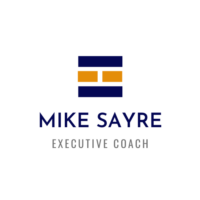In addition to your people…the present and future of your business depend on CASH!
Do you know how much cash you have immediately available in the bank for the business? Do you have enough to cover your next payroll, the one after that, etc.? Do you have alternate sources of cash set up for temporary needs? If you use them, do you have any idea when you’ll have enough cash to pay them back? If you can’t answer those questions, you are not the alone! Even if your business has been going really well over the past couple of years, the current pandemic may be creating new financial challenges that you really need to be preparing for now! So those questions may still apply.
You would not believe the number and size of businesses that don’t have this relatively simple information to help keep their business running smoothly, let alone during a crisis.
Below in this article is a simple cash flow model in a spreadsheet. Before you get that far, it is no more than…
Cash in the bank today.
+ Cash coming in (accounts receivable collections and maybe some borrowing on a credit line)
– Cash going out (payroll, benefits, rent, and other expenses)
– Cash in the bank at the end of that period (weekly here, but could be monthly as well)
OMG…Duh…you say? Then go and ask your controller or accountant for the answers to those questions. If they can just pull them up and give them to you, awesome! If not, read on.
Do not put this off and do not overthink it! Have your controller or accountant put together a spreadsheet similar to this for your business, and tell them not to put this off and not to overthink it! Just make sure they are estimating to the best of their ability what the big and important numbers are and lump the rest into an average number for the periods being forecast.
Here is the model:

Some things to note:
- This example started as a software-as-a service (SaaS) provider’s projections…don’t get caught up in the expense titles listed. The simple mechanics of the model are key and the model needs customized for your business!
- Rounded numbers are close enough.
- This company only pays its bills once per month (less expensive to do, easier to manage the cash flow, and most great partners will accept this…if not, pay twice per month).
- Notice that if the company does not borrow on its line of credit, or provide the funding from somewhere else, it can’t make payroll in the week of 4/11/20. In this model, ABC borrowed $150,000 on its line of credit and is going to start paying it back 1/3 per month by the end of the current month ($51,500 includes interest), when the crisis is over.
- This model is only for one month. You may want to do a couple of models so you can better plan what you will do if things don’t work out like you think and/or over longer periods of time.
- If you can’t make that next payroll, and you don’t have the immediate ability to borrow from anyone or pull in additional investor cash, you have a major problem that would be better to figure out and address now, rather than when your controller or accountant tells you the company is out of cash…which may not be until the day that payroll is supposed to go out or a major supplier needs paid.
Some potential options for increasing your cash flow projections?
- Kick up collection efforts from your biggest customers (be careful of setting off alarms unnecessarily)
- Delay vendor payments (be careful, but be honest…reread my last article on people and remember that vendors are people too)
- Delay payroll (I’d suggest being honest and transparent with your employees on how they will get caught up on their pay based on your cash flow projection model)
- Temporary pay cuts (if you are being honest and transparent, your employees may be more willing to work with you on more than you think!)
- A temporary layoff or shutdown
- Permanent layoff or shutdown (the last resort!)
- Are there other possibilities in your particular situation?
In any case, I hope you can see how this simple cash flow projection model is worth the effort, if you pay attention to it.
Once again, please do not overthink it and try to be any more precise than you really need to be! Getting a decent picture of where you are on a timely basis is of the essence right now.
The goal of this blog is to get business owners and C-level execs to be more proactive in managing their business through this crisis, or any other crisis for that matter.
Don’t let your business CRASH because you did not pay attention to CASH!
Mike Sayre has successfully piloted businesses through difficult times of crisis for over 20 years – as a CEO, President & COO, CFO, and/or Board Director. He is currently an independent executive leadership consultant working through Civilis Consulting and the Innovative Leadership Institute, trusted partners inspiring and enabling perpetual innovation, evolution, and growth in leaders and their businesses.

